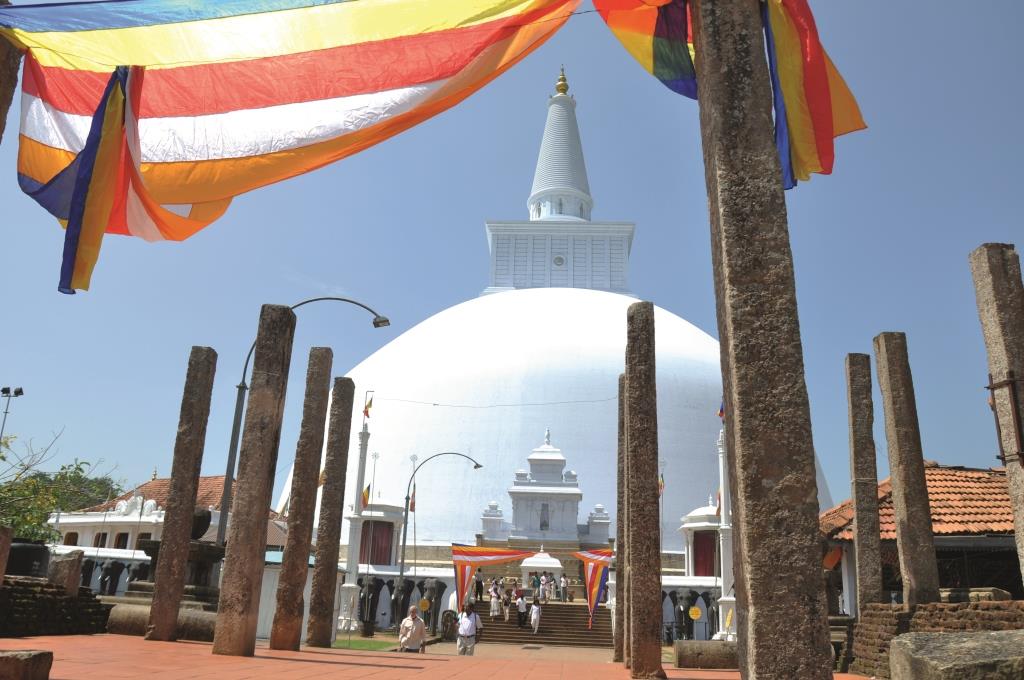Sri Lanka is a tropical island steeped in history—boasting multiple ethnicities and beliefs. It is a melting pot of Sinhala, Tamil and Indian people, as well as the ancestors of Dutch, British and Portuguese colonialists. The country’s diverse landscape offers visitors a multitude of activities and experiences; Sir Arthur C. Clarke called Sri Lanka “the island jewel of the Indian Ocean”, and he had seen the universe.
Swift reconstruction efforts, after the 2004 tsunami, have been funded by NGOs and returning tourists who have recognized its potential as a leading tourist destination. It is now possible to rent a fully furnished villa with personnel attending to your every desire. Perhaps a private island, previously owned by a count, takes your fancy? Comparable are the luxurious resorts that spoil residents with palm-tree-fringed private beaches where falling coconuts are the highlight of the day. Visitors are beckoned to book themselves into a spa, participate in a yoga retreat or take a course on meditation.
At dinner—after a day of scuba diving and snorkeling—you can fantasize about tomorrow’s whale watching cruise. Satiate your adrenalin cravings with numerous water sports or challenge the waves the following day. Ascending the country’s highest peaks; rock climbing and abseiling have also proved popular among tourists.

Galle fortress on the Southern Coast of Sri Lanka
With its fortifications perched on a rocky outcrop on the south-western peninsula of Sri Lanka, the city of Galle is one of Sri Lanka’s top tourist hotspots. The Unesco World Heritage Site remains the largest European-built fort in Asia and is best viewed while sipping champagne in a hot air balloon. Its cobbled streets are dotted with Dutch colonial buildings, which have been rejuvenated as museums, boutique hotels and elegant restaurants. The latter provide ideal respite after a sightseeing tour in Marco Polo’s footsteps.
Food is abundant in Sri Lanka. If you need something quick and easy, most bakeries sell vegetable curry-filled rotis and carefully wrapped samoosas. For something more elaborate, handpick a lobster or crayfish from a local fisherman and have a beachside restaurant prepare it for you while you watch a live fire-throwing performance. Indian and colonial influences have infused Sri Lankan food with unique flavors which include an abundance of coconut milk and bouquets of spices.
Being chauffeured northwards, in the comfort of your privately hired car, allows you to observe the majestic landscape. The small hilltop town of Nuwara Eliya is especially charming. It is brewed in nostalgia, with local traditions adopted from the British colonialists. Here, you can join a white-clad gentleman on the golf course or place bets on horse races. The cool atmospheric conditions—it’s located 1,860m above sea level—are ideal for tea cultivation. Take the time to visit the privately-owned plantations. Look through bakery windows and you’ll find English scones being served for breakfast alongside a pot of Ceylon tea. After all, the island was called Ceylon until 1972.

Nuwara Eliya tea plantations
Kandy, which recollects childhood fantasies due to its name, is a cultural haven and home to the Buddha tooth relic temple and the burial grounds of kings gone by. Further along, you will encounter Sigiriya, meaning ‘Lion’s Rock’ in Sinhalese. This hardened magma plug of an extinct volcano rises sharply 370m above the plains. Age-old rock paintings suggest that its caves have been inhabited since prehistoric times. According to local folklore, it was the royal playground of King Kassapa I. Since its re-discovery in 1831, it has been declared a ‘pre-1900 creation’ and the eighth wonder of the world. Palace pools and ruins lie atop its flat peak, which offers magnificent panoramic views.
The ancient city of Anuradhapura was Sri Lanka’s capital city for 1,000 years. The assortment of dagobas (Buddhist shrines); high-rise temples; ponds and ancient palaces are vestiges of its cultural, religious and architectural importance in Sri Lanka’s history. Unesco has classified it as one of the oldest continually inhabited cities: the new city center arises at the foot of the ruins. The Ruwanweliseya dagoba, which is synonymous with Anuradhapura, is revered for its architectural splendor. It is one of the world’s largest brick monuments built before the 20th century.
Although the majority of Sri Lankans are Buddhist; Hindu, Christian and Islamic influences are also visible. The birthplace of Buddhism in Sri Lanka can be traced back to Mihintale. I accompanied barefooted, white saris on a short pilgrimage, up 1,840 stairs to the meditating Buddha statue.
Sri Lanka is overflowing with local cultures, traditions and a fascinating history. The smiling locals are fully inclusive.
www.srilankatourism.org should set you on the right path. According to icanholidays, you should budget at least $500 a day to live in the lap of luxury.
